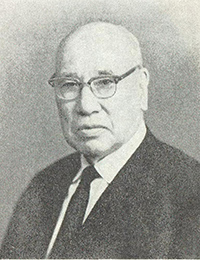 We have received information that Siemens and GE competitors have begun to add financial terms to the sale of medical devices in Brazil. In other words, it is an installment sale.
We have received information that Siemens and GE competitors have begun to add financial terms to the sale of medical devices in Brazil. In other words, it is an installment sale.
It was commonplace in the United States, Europe and Japan, but in countries like Brazil, installment sales were not common due to economic instability. Brazil is a country with an inflationary economy, and the devaluation of the Brazilian currency, Cruzeiro, was so severe that installment sales were scary and no one thought about it. However, Siemens and GE, who considered the future of Brazil, were aggressive.
If the manufacturer did not do such installment sales, no one would have done it. That’s why it was called Supplier’s Credit. No matter how rich the doctors were, few could pay cash to buy medical equipment for tens or hundreds of millions of yen.
At that time, there was an installment payment system in Brazil, but no one used it because the interest rate was too high.
Therefore, in order to start the operation of Supplier’s Credit, we invited the president of Toshiba International (abbreviated as TIC) and the president of Toshiba Medical do Brasil (abbreviated as TMB), a Brazilian subsidiary, to the Toshiba headquarters.
Mr. Okawa, the president of TMB, and Mr. Takase, the sales manager, came to Tokyo and had a meeting in advance to create a five-year sales plan.
At that time, the manager of the medical device export section was Mr. Takimoto.
Mr. Okawa and Mr. Takimoto had completely different ideas. Even so, Okawa managed to compromise and the five-year sales plan was finalized.
After that, we, the chief Ogishima, and I made a plan according to the plan.
We first made the draft with a calculator, and the plan was made with a word processor or a minicomputer.
However, when the plan was completed, Mr. Takimoto said that he would try to make another plan from a different point of view.
So again, we were swayed.
We then went home after midnight.
When I repeated this three times, I got angry and told Mr. Takimoto
“What kind of plan do you plan to present?”
Then Mr. Takimoto said cheeky.
“You guys should sing according to my tact.”
I even urged Mr. Takimoto.
“What song do you make us sing?”
Mr. Okawa from Brazil also agreed with us.
And the day of presentation came.
The presentation was given by Mr. Okawa.
It took about 20 minutes.
TIC President Ishizaka, who came from the United States, looked at Okawa with a keen eye.
“I think it’s a good plan.
I think this business is profitable.
However, originally, Mr. Takimoto of Toshiba Headquarters did not ask me to cooperate, so unfortunately I will not participate in this business. ”
He went out of the room.
Mr. Takimoto, who was told that, just grinned.
I couldn’t forget this scene.Mr. Ishizaka was the son of Mr. Taizo Ishizaka, who was formerly the chairman of Keidanren (Japan’s largest economic organization). I had never seen such a majestic, brilliant man before or after.
In the Toshiba COCOM case in 1985, President Aoi admitted everything to the United States and took an apology, but Mr. Ishizaka insisted that Toshiba’s attitude should be strongly shown to the United States. However, President Aoi did not adopt Mr. Ishizaka’s opinion. Therefore, he gave up on Toshiba and quit. I rated him as a very talented and courageous man.
On the other hand, Mr. Takimoto was relegated to the factory after this.
At this time, I woke up that the company was tough.
A year later, the case of this Supplier’s Credit was realized by holding a meeting in Sao Paulo with President Tachiki of Toshiba International Trading (TIT), President Okawa of TMB, the manager of accounting section of the head office, and myself. At that time, I was surprised by everyone because I made a formula using Σ to calculate the compound interest rate of Supplier’s Credit. It was nothing special to me.

横浜こぼれ話は筆者の佐藤栄次が随筆や意見や考えを書いておりますので、一度見に来てください、
%d人のブロガーが「いいね」をつけました。




